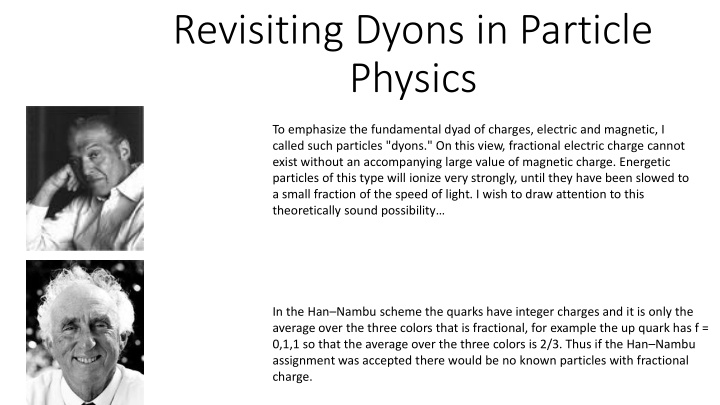



Revisiting Dyons in Particle Physics To emphasize the fundamental dyad of charges, electric and magnetic, I called such particles "dyons." On this view, fractional electric charge cannot exist without an accompanying large value of magnetic charge. Energetic particles of this type will ionize very strongly, until they have been slowed to a small fraction of the speed of light. I wish to draw attention to this theoretically sound possibility… In the Han – Nambu scheme the quarks have integer charges and it is only the average over the three colors that is fractional, for example the up quark has f = 0,1,1 so that the average over the three colors is 2/3. Thus if the Han – Nambu assignment was accepted there would be no known particles with fractional charge.
Total Decay Rates Versus Particle Mass Blue Dots = Light unflavored mesons, 𝑑 states, +𝑐ത 𝑑 ҧ 𝑐 states from the Meson 25 W t summary in PDG-2014 𝜍 Log (Decay Rate in Inverse Seconds) 𝜕 𝜚 H Blue Line = Locus of states where decay width = mass 𝜃 ′ 𝜃 Green dots = weakly decaying mesons 𝜌 0 Green Line = Muon Decay Rate Formula 𝐸 + B mesons Black Dots = Charm and Bottom Baryons 𝜌 + 𝐿 + Red Line = Electromagnetic Slope = 3 5 𝜈 Dashed Line = Γ of 𝑎 0 = 2.50 GeV = 4 𝑦 1024 /sec 0 2 6 3 4 5 Log (Mass in MeV)
KLOE2 phi K-K+ + 120 MeV/c A S = - A L
Unfavored Solution – is it really ruled out? Cronin eloquently expressed the case for the favored solution, “At present our experimental understanding of CP violation can be summarized by the statement of a single number. If we state that the mass matrix which couples 𝐿 and ഥ 𝐿 has an imaginary off-diagonal term given by Im M 12 = - 1.16 x 10 -8 eV.” The equivalent statement for the unfavored solution is that the decay for the 𝐿 0 exceeds that of the 𝐿 0 by an amount
Recommend
More recommend